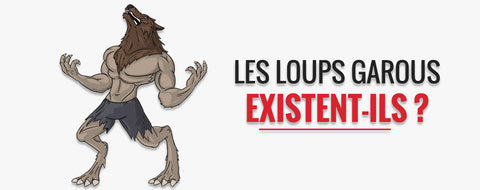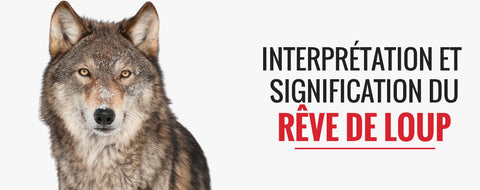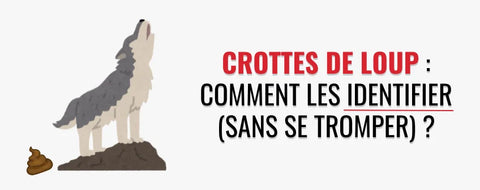
9 different wolf breeds
of reading - words
The wolf is a carnivorous mammal (carnivora) that belongs to the Canidae species . This family includes the gray wolf , the dog, the jackal, the coyote, the fox, etc. This wild animal often lives in society, especially in packs.
This animal exists all over the world: Europe, North America and Asia. In particular, the presence of the wolf in France is remarkable, as 580 individuals were recorded at the end of the winter of 2019-2020 (according to the Wolf-Lynx network ).
There are several different species, each with its own unique characteristics. This is what we will discover in this article.

THE MAIN CHARACTERISTICS OF THE WOLF
The wolf is a ferocious predator, characterized by a highly developed sense of smell that allows it to detect its prey from several kilometers away. Howling is the means of communication used by these wild animals, during hunting and to ward off foreign wolves.
The wolf is a social animal that lives in a pack , which consists of about twenty individuals. The herd follows a very strict hierarchy , where we find at the top the Alpha couple and at the lowest rank the Omega wolf. The dominant couple (composed of the Alpha male and his wolf) leads the pack and makes all the vital decisions regarding hunting and movement.
The pack leaders enjoy several privileges. These include being the first wolves to begin eating the prey after the hunt. Furthermore, the sole wolf pair holds the right to reproduce.
There are several breeds of wolves scattered across many parts of the world.
Before continuing, discover our wide selection of wolf iPhone cases .
THE DIFFERENT BREEDS OF WOLF
1) Gray wolf (Canis lupus)
The gray wolf is the most well-known carnivorous mammal in the world: Canis lupus. This family includes more than 20 subspecies , distributed throughout the world, mainly in the United States.
This ferocious animal has a powerful physical structure and generally weighs between 25 and 35 kg. It has long legs for walking in the snow. Its fur can be of different shades: white, black, brown, gray, etc.

2) Arctic wolf (Canus lupus arctos)
The Arctic wolf is the unmistakable breed found in Canada and Greenland. It is a subspecies of the gray wolf . Physically, it is smaller than its congeners. It weighs approximately 45 kg. It has white fur that blends perfectly with the icy climate where it lives.
This breed often lives in caves. It feeds on other arctic mammals, such as cattle, caribou, seals, etc.

3) The Eastern Wolf (Canis lycaon)
The Eastern Wolf belongs to the Canidae family. Its range covers only south-central Ontario and south-central Quebec. Reproduction of this animal is limited due to high mortality rates of this breed outside protected areas.
This species is characterized by a smaller size compared to the gray wolf, making the animal's silhouette closer to that of a coyote. Its coat can be reddish-brown or grayish-brown. Its diet is based mainly on rodents and birds.

4) The Ethiopian wolf
The Ethiopian wolf (also called Abyssinian wolf) is a species native to East Africa. This breed is divided into two subspecies:
- Canis simensis simensis : this breed is present in the Simien Mountains, northwest of the Rift Valley.
- Canis simensis cisternii : This subspecies lives in the Bale Mountains, southeast of the Rift Valley.

5) The black wolf
The black wolf is found in Europe, North America and Asia. This animal existed in Florida ( Canis lupus floridanus ), but unfortunately, it was declared extinct in 1908. The color of its coat is a variation of that of the gray wolf and is the result of genetic hybridization between wolves and domestic dogs .

6) The dingo (Canis lupus dingo)
The dingo (or Australian wild dog) population is found mainly in certain regions in Asia and Australia. It is an omnivorous animal , which is part of the canidae family. It feeds on small mammals, insects, cattle, etc.
Because of its small size, it is considered a dog. It is even domesticated by some people. The color of its coat varies between yellow and red.

7) The Siberian wolf
The Siberian wolf is distributed throughout Siberia, the Scandinavian region, and the Russian tundra. It is covered in long, dense fur that provides better protection against freezing temperatures. It is a nomadic breed that moves according to the migrations of its prey . This animal feeds on arctic foxes, reindeer, hares, etc.

8) The red wolf (Canis rufus)
The red wolf is found in Mexico, Canada and the United States. Unfortunately, this breed is in danger of extinction due to the excessive hunting of the animals it feeds on. It feeds on deer, rodents, etc. It is distinguished by its spotted coat with gray, reddish or yellow areas.

9) The domestic dog (Canis lupus familiaris)
The dog is a favorite pet for many people. This subspecies exists in several breeds, which vary according to several criteria: size, coat, life expectancy, etc.
The wolf and the dog are part of the same species, which is Canis Lupus. According to some stories, the wolf is the distant ancestor of the dog . It differs from this domestic animal by its larger head and wider mouth.
To understand the origins of the wolf, the researchers first sequenced the genomes of three different subspecies, selected from Asia, the Middle East, and Europe. They then sequenced the genomes of an Australian dingo and a Basenji. Finally, they added the jackal to the experiment. The results yielded these percentages:
- 72% coincidence between wolves.
- 38% coincidence between the two dogs.
- Only 0.5 between dogs and wolves.
( Source ) This surprising observation refutes the hypothesis that the wolf could be the ancestor of the dog.

🐺 Conclusion 🐺
To satisfy your passion for these totem animals, we invite you to visit our online store to discover our wide range of products: Wolf mugs , wolf toys , wolf costumes , etc.





LETOREY Danielle
Près de Rome en Italie, j’ai vu un croisement fait volontairement par un ancien berger à la retraite d’une chienne “chien-loup-policier” avec un loup sauvage des Abruzzes. Le résultat: une très jolie femelle d’apparence “chien-loup” assez petite de taille, très gracieuse dans ses attitudes, mais avec des crocs vraiment très longs et des griffes rétractiles comme chez un félin, capable de “grimper-sauter” un mur de plus de 2 mètres sans problèmes et un regard jaune clair droit, observateur et très insistant au départ quand elle voyait quelqu’un pour la première fois (avec son proprio à côté!). On pense tout de suite au conte de Perrault! Les bergers préféraient ces chiens “bâtards” pour garder leurs troupeaux car ils étaient moins peureux vis à vis des bandes de loups qui circulaient dans les Apénnins vers 1970.
Amélie Matthews
Je ne savais pas q’une race de loups étaient domestique! Merci beaucoup!!!
Amélie